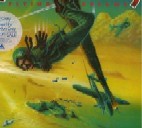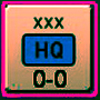denisonh
Posts: 2194
Joined: 12/21/2001
From: Upstate SC
Status: offline

|
Boston Globe
August 17, 2006
Pg. 1
After Six Decades, A Submarine's Fate May Surface
By Ralph Ranalli, Globe Staff
There was no distress call, no indication of enemy depth charges exploding or bulkheads breached, just a dead silence that stretched from a few days into 60 years.
The USS Grunion disappeared in July 1942, leaving 70 American families grieving and the three sons of skipper Mannert L. ``Jim" Abele, without a father. Abele's boys -- ages 5, 9, and 12 and living in Newton when their father disappeared -- grew up and built their own lives. But, they dwelt on the fate of their father. At 2 a.m. yesterday, a grainy sonar picture e-mailed via satellite appeared in Bruce Abele's inbox, appearing to finally show what they had been searching for much of their adult lives: the outline of an oblong object believed to be the Grunion deep in frigid Alaskan waters.
If the discovery is confirmed, it would signify a triumph of luck and perseverance and put to rest a quest for clues, financed by the personal fortune of one of the Abele sons, that has spanned decades.
``It's big, very big," 76-year-old Bruce Abele, the eldest of the three sons, said yesterday. ``This mystery has been a part of my consciousness for as long as I can remember."
The Grunion, one of the Gato-class attack submarines commissioned in the early part of World War II, was on its maiden operational voyage when it disappeared while patrolling the seas between Alaska's tip and Japan, according to a Navy website.
The submarine made several transmissions in July 1942, reporting it had sunk three Japanese destroyers. On July 30, it reported heavy antisubmarine activity nearby and said it had 10 remaining torpedoes. It was never heard from again. Warplanes searching for wreckage never found any evidence of the sub's fate.
For years, the sons -- Bruce, Brad, and John, who is founder of Boston Scientific Corp. -- have pored over Navy documents, any shipping records of the area they could locate, and contacted others interested in the Grunion's fate. John Abele, a billionaire, has paid for much of the search. He declined to say how much he's spent.
The effort wasn't made any easier by the brutal seas around the Aleutian Islands, widely considered some of the most dangerous in the world, with winds that can howl at 100 miles per hour, waves taller than a house, and ocean depths of 1,800 feet and greater. Any search mission would have to know where to look, since a long scouting voyage would be dangerous and expensive.
A break came in 2002, when a Japanese man, Yutaka Iwasaki, posted a translation of an article in an obscure Japanese shipping journal on one of several websites dedicated to the Grunion. The article, written by a military officer on board an armed Japanese merchant ship, the Kano Maru, described an exchange of cannon fire and torpedoes with an American submarine in an area where the Grunion would have been patrolling.
Iwasaki's involvement changed everything, John Abele said yesterday. Not only did the brothers have a place to look for their father's submarine, but they also had newfound friends from the other side of the war. They were so inspired by the cooperation they received from Iwasaki and others in Japan that they decided to expand the search to find two Japanese sub-chasers, SC-25 and SC-27, that were sunk by the Grunion and to find the Arare, a Japanese destroyer that went down in the same area.
``This has been a very emotional thing for a lot of us," John Abele said.
After four years of research, the brothers finally decided they could make a good enough guess at probable locations to start looking, with John Abele deciding to fund the search himself.
After a discussion with renowned Titanic explorer Robert Ballard, who declined to take on the exploration, the brothers hired a Seattle ocean surveying firm, Williams and Associates. They also chartered a crab fishing boat, the Aquila, skippered by a seasoned veteran of the dangerous waters, Kale Garcia. The family is represented on the boat by Peter Lowney, a former Newton resident and crab boat crewman who is chronicling the search with a pair of high-resolution video cameras and sending back frequent updates.
The search, with sonar equipment capable of returning high-quality images, began two weeks ago. The boat traversed a grid, seeing nothing but sonar images of the ocean floor.
Then they saw on the screen a smooth, oblong object with features that could be a tower and periscope mast.
With no other submarines they know of reported sunk in the area, they concluded it must be the Grunion.
John Abele said that the brothers will fly to Alaska next week on his private jet to tour the area and meet with the survey crew. They said they will probably return to the site next year and send an unmanned, remote-control device beneath the waves to get a closer look at the object and take pictures.
Jack Green, a historian at the Naval Historical Center in Washington, D.C., said yesterday the Navy has been aware of the Abeles' quest for the Grunion. Green said the Navy rarely helps with such searches and is unlikely to aid in theirs unless the brothers provide more proof than a sonar image.
``But this is very, very exciting," he said. ``We'll be very excited to see what they come up with."
While photographs could finally solve the puzzle of what actually happened to the Grunion, John Abele said the brothers' motivations are much more personal.
``We're doing this as much from a desire for connection with my father as to learn the answer to a mystery," he said.
_____________________________
 "Life is tough, it's even tougher when you're stupid" "Life is tough, it's even tougher when you're stupid" -SGT John M. Stryker, USMC
|
 Printable Version
Printable Version










 New Messages
New Messages No New Messages
No New Messages Hot Topic w/ New Messages
Hot Topic w/ New Messages Hot Topic w/o New Messages
Hot Topic w/o New Messages Locked w/ New Messages
Locked w/ New Messages Locked w/o New Messages
Locked w/o New Messages Post New Thread
Post New Thread